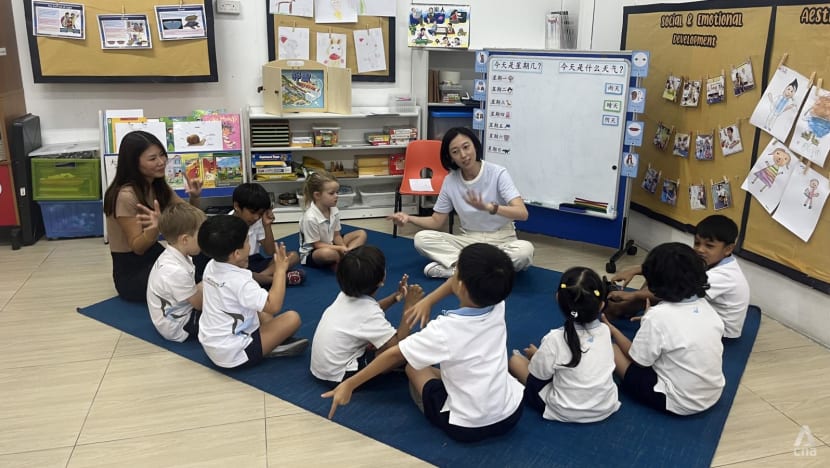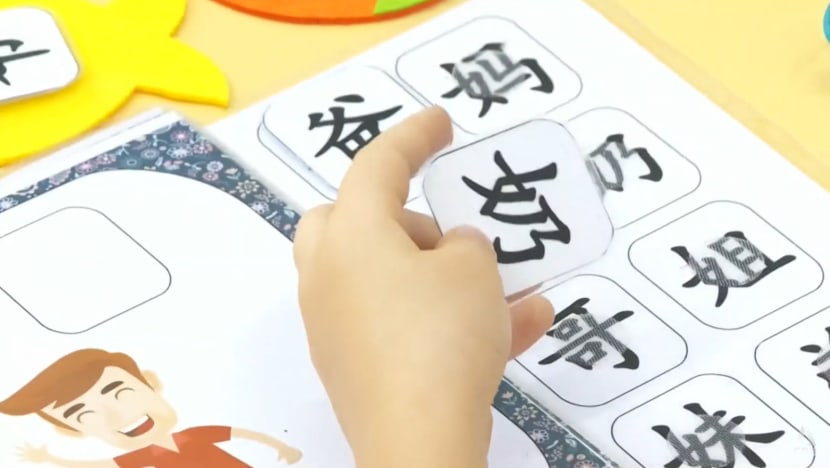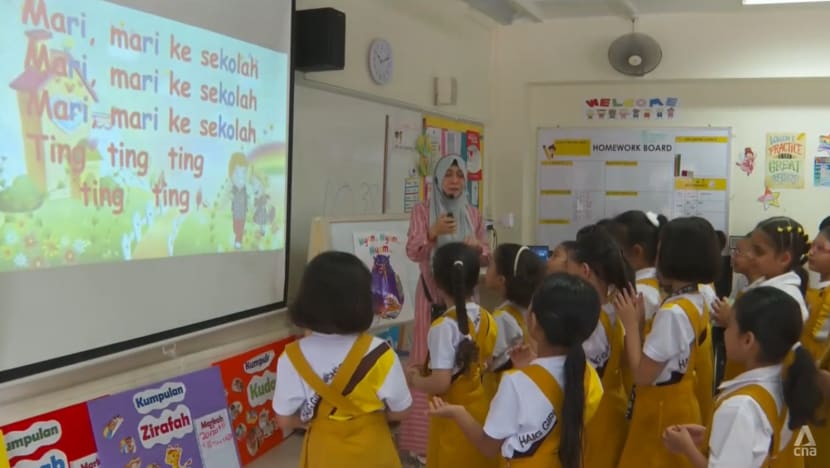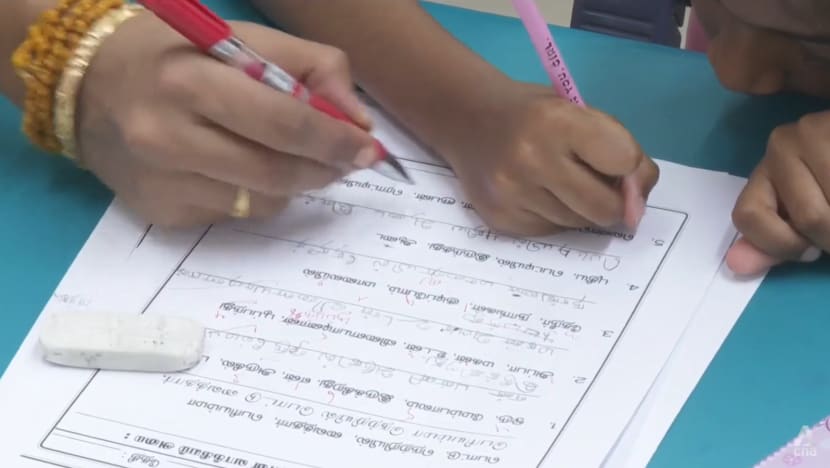Manpower shortages, lack of use: Mother Tongue educators face challenges amid declining proficiency
Malay and Tamil language teachers have sought new ways to teach the subject in schools, especially with a lack of tuition options outside, while preschools are facing a shortage of Mandarin teachers.

Preschools here are facing a shortage of Mandarin teachers, amid a lack of local interest in the sector and the strict quotas on hiring foreign workers. (Photo: CNA/Clara Lee)

This audio is generated by an AI tool.
SINGAPORE: Public schools and private centres are ramping up efforts to get children interested in learning their Mother Tongues, and sharpening their bilingual edge.
This comes as educators in Singapore cope with the challenges of a declining proficiency in second languages across the board.
Malay and Tamil language teachers have been trying to find new ways to teach the languages in schools, especially with a lack of tuition or enrichment options outside.
Preschools here are also facing a shortage of Mandarin teachers, amid a lack of local interest in the sector and the strict quotas on hiring foreign workers. This has increased the pressure on existing teachers, who have to take on more classes to fill the gaps.
FILLING MANPOWER GAPS
Preschools in Singapore told CNA that vacancies for Mandarin teachers have been taking as long as six months to fill, or in some cases not at all.
Ms Jackie Barkham, director of Swallows and Amazons Kindergarten in Bukit Timah, said her teachers have had to double up and cover two classes, instead of being dedicated solely to one.
“It's still good, but it's not what I wanted to offer. The time they spend with each other (and) the exposure that each child gets to the language is less,” she said.
The shortage in Mandarin teachers is also forcing some preschools to put their expansion plans on hold.
EtonHouse is rolling out a new Mandarin immersion programme next year, with pilot classes currently underway.
The curriculum is taught entirely in Mandarin and also includes cultural learning, with students taking part in tea appreciation, Chinese calligraphy, and even learning how to make noodles.
Enrolment demand for the programme is high, but the manpower crunch is derailing its expansion plans, with the school hesitant to take in more students until they hire four more teachers.
Ms Evelyn Tay, chief operating officer of EtonHouse Group Singapore, told CNA that there is not enough local interest in teaching the language, so the company has had to think of other solutions.
“What we are doing actually is to collaborate with universities in China to look at getting Mandarin teachers to join us as interns so that we can actually build their capabilities and help them grow in their journeys as Mandarin teachers, and that helps us grow the pipeline for our Mandarin teachers,” she said.
Letting educators from China work here full-time, however, is dependent on the strict foreign worker quota in place.
Ms Thian Ai Ling, general manager of My First Skool, which manages 156 outlets across the island, told CNA a higher quota could make a real difference.

“Over the next two to three years, we are also expanding the number of preschools we have in Singapore, hoping to support more and more Singaporean families,” she said.
“So adjusting that quota will definitely help us to bring in more support and also to complement the diversity of the teaching force in the preschool sector.”
For now, preschools here are focusing on attracting mid-career switchers who are not just qualified to be Mandarin teachers, but also interested in the job.
NEW TEACHING APPROACH
For parents whose children take Malay or Tamil as a second language, there are not many tuition or enrichment options to supplement school lessions.
This has pushed schools to think of new teaching approaches to get students interested in learning and become more proficient in their Mother Tongues.
There is greater emphasis on interaction and the use of technology in a new learning format currently being piloted in some primary schools, which will be progressively rolled out across Singapore next year.
Why is there a decline in mother tongue proficiency? Listen to Daily Cuts:

In Malay language classes at Haig Girls' School, Primary 1 students learn their numbers through songs and the alphabet from storytelling.
“Right now we see that students are not really proficient in the Malay language, because at home they usually speak in English with their parents. So when they come to school, they tend to speak in English,” Malay language teacher Rita Zulkarnain Taha told CNA.
“So the new syllabus encourages the students to communicate in Malay. And so when they talk to their friends, they will talk in Malay, even though their grammar is not really proper.”
The use of second languages has been on the decline, according to the Ministry of Education.
The percentage of Primary 6 students speaking mostly Malay with their peers fell to 40 per cent in 2021 – half of what it was a decade ago.
For Tamil, that figure fell by 13 per cent.

Some Tamil language tuition centres, such as Jai Learning Hub in Yishun, are also making the shift towards more interactive ways of teaching.
Jai Learning Hub started getting more hands-on a few years ago, with its enrolment growing steadily at 20 per cent annually ever since. Its students are also getting started at a younger age.
Chairman Mageshwaraan told CNA: “The younger parents who were part of the generation that perhaps struggled a bit more in Tamil, truly understand the importance of Tamil right now and do not think twice before sending their kids over for Tamil enrichment classes to ensure that their kids, as young as two, have the ability to speak in Tamil and are able to articulate their thoughts in Tamil.”
The centre is now looking to hire more teachers and ramp up in-house training to meet rising demand for its programmes.
















